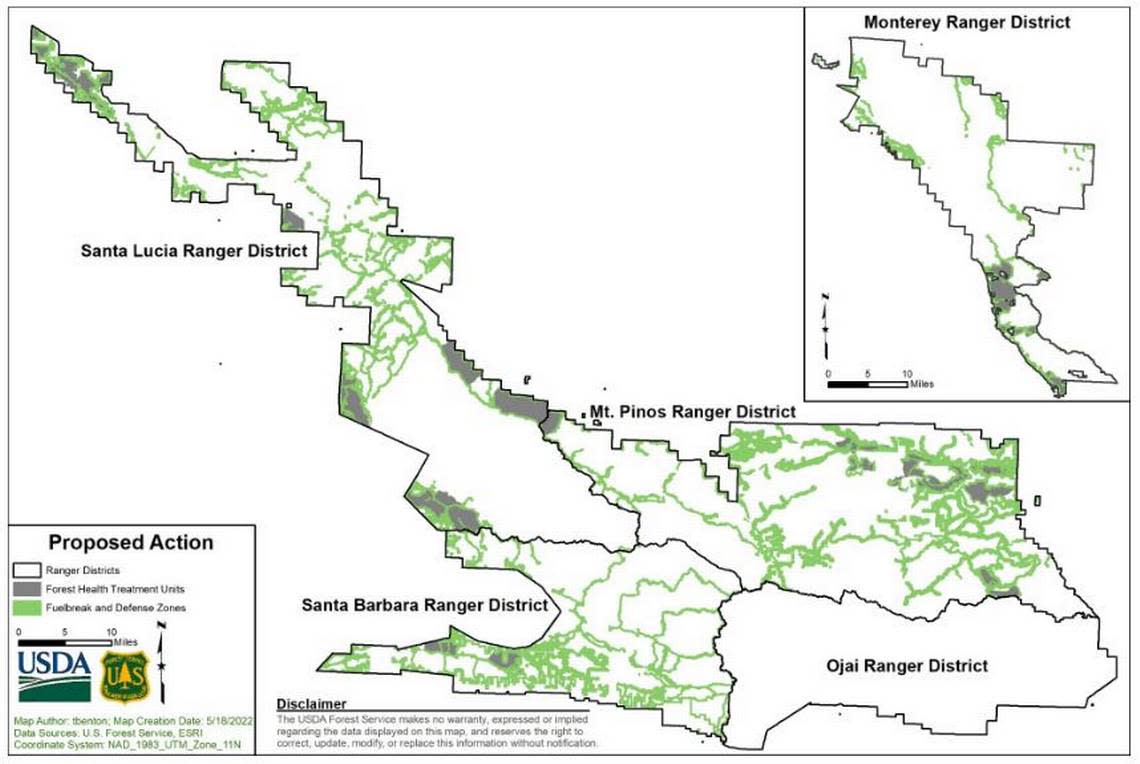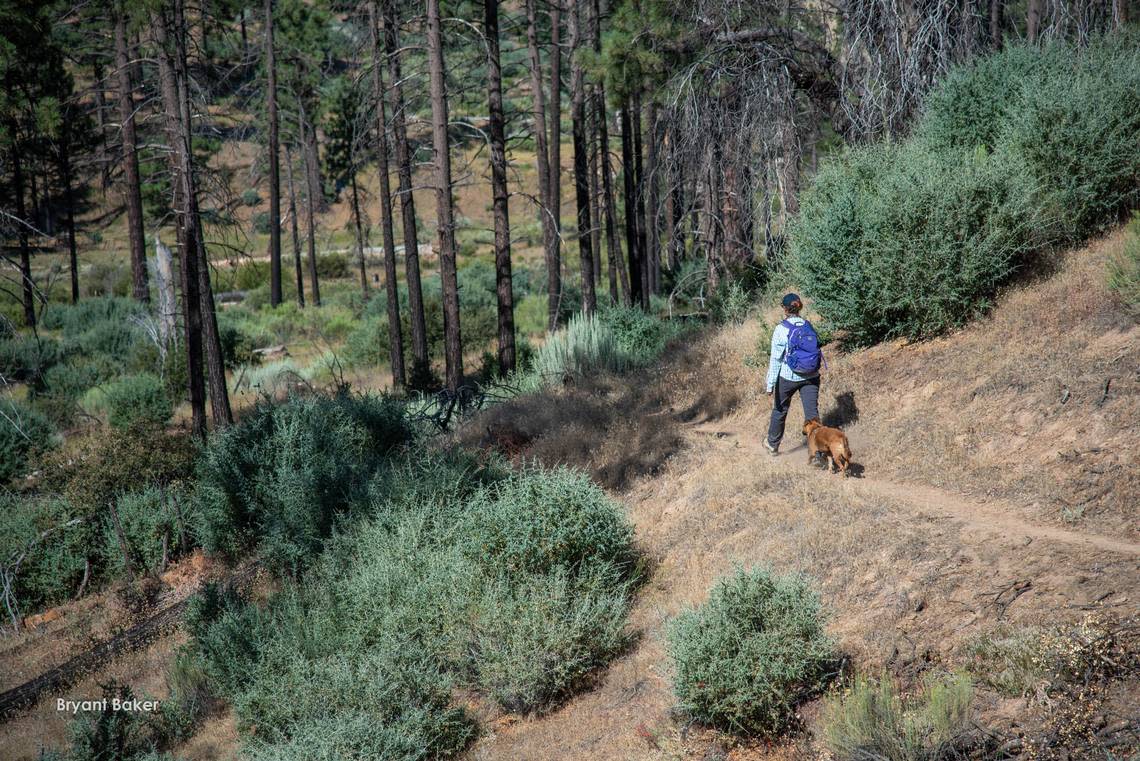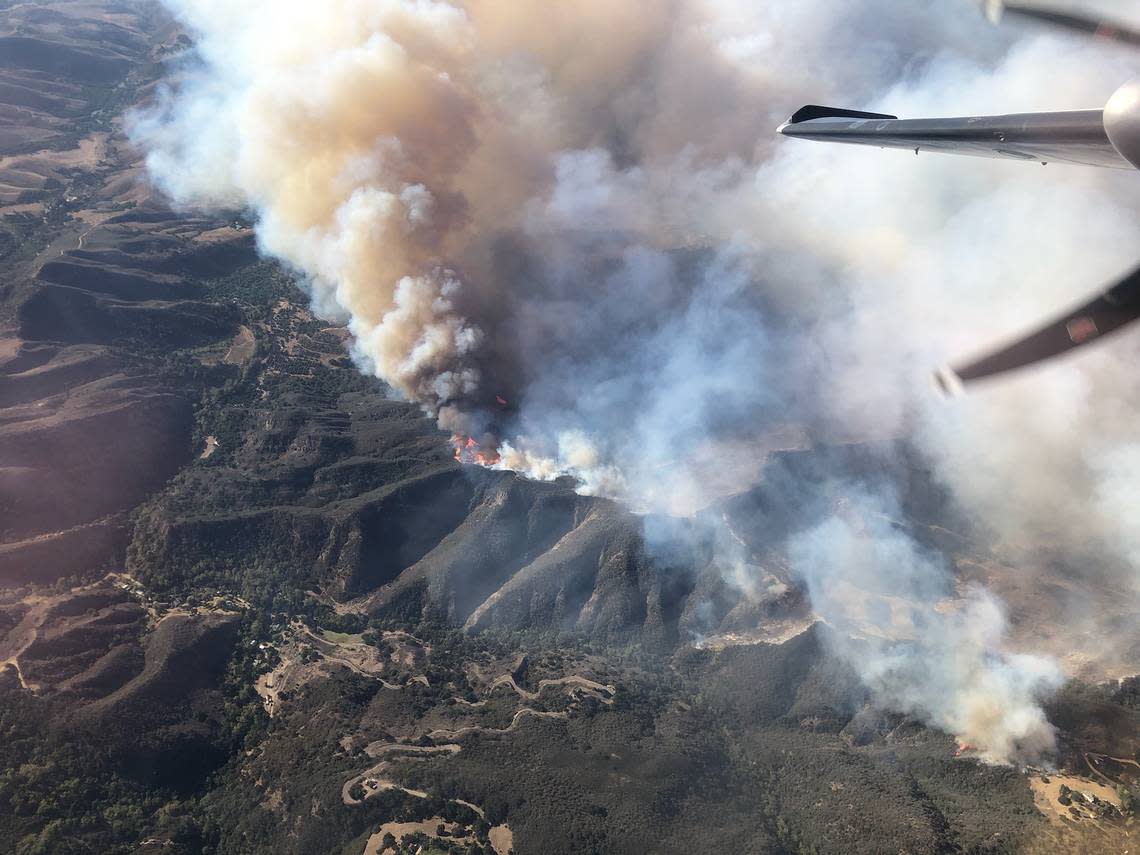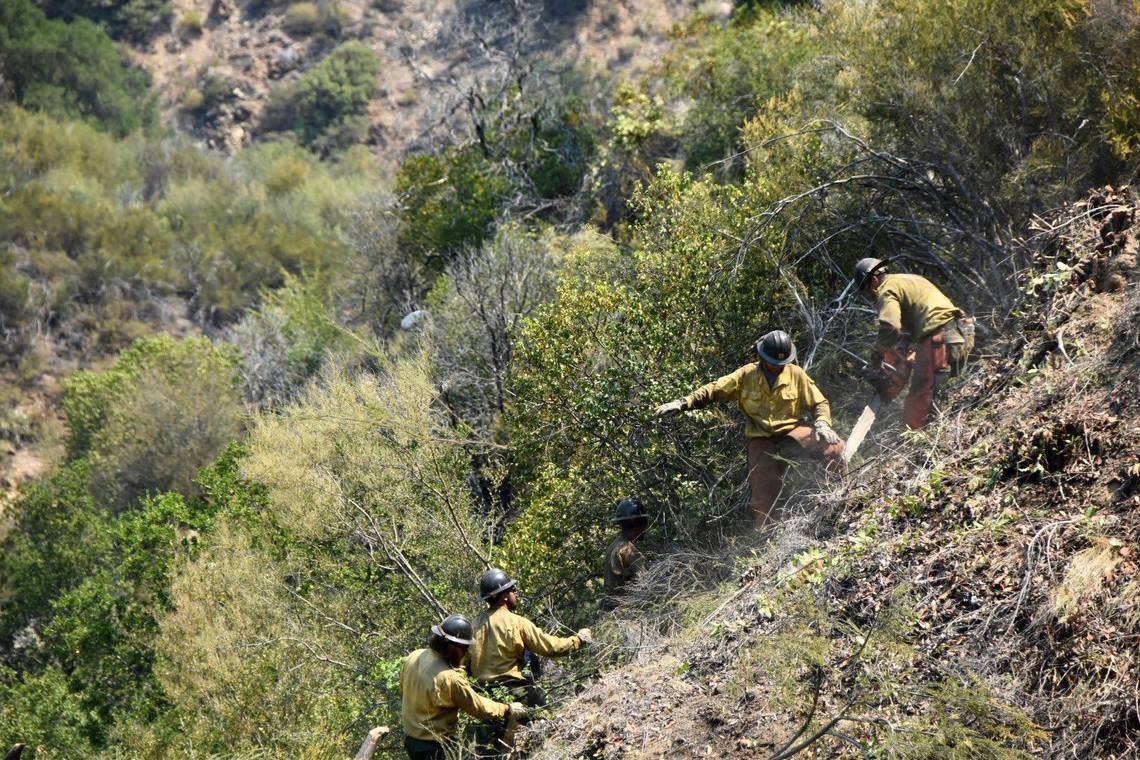Massive ‘restoration project’ planned for Los Padres National Forest. Here’s what is proposed
Officials with the U.S. Forest Service are seeking public comment on a massive proposed project in Los Padres National Forest to reduce fire fuels, restore fire-adapted ecosystems and conduct prescribed burns.
It’s a plan that one environmental group is calling “dangerous” and akin to destructive logging of important forest habitats.
According to a news release sent July 29, the so-called “ecological restoration project” would encompass about 235,495 acres of land in Kern, Monterey, Santa Barbara, Ventura and San Luis Obispo counties where the forest stretches almost continually.
The areas of Los Padres National Forest are proposed to be treated with two methods: known as “forest health” and “fuels reduction” treatments, according to the Forest Service.
Forest health treatments “would focus on reducing competition, improving the health of remaining trees and increasing the overall average stand diameters,” the Forest Service said in its detailed project proposal. “In addition to improving forest health, the treatment areas would also benefit fire and fuels management by reducing surface, ladder and crown fuels.
Those treatments would be located in certain blocks over large areas, according to a proposed map by the Forest Service.

Proposed project would thin forest, create fire fuel breaks
The proposed fuels reduction treatments involve “the establishment and maintenance of strategic fuel breaks to slow the rate of spread and intensity of wildfire for the purpose of aiding suppression efforts and in protecting infrastructure, communities and natural and cultural resources,” the Forest Service said in its news release.
These treatments would line developed areas including roads, motorized trails, recreation sites, fire stations and property lines, according to the Forest Service.
“Treatment methods for either category may include mechanical and hand thinning, mastication, mowing, prescribed fire, grazing treatments and planting and seeding of buffers or along roads,” according to the Forest Service.
The large, focused forest treatment project is necessary to help the forest become healthier and more resilient to climate change, the Forest Service said in its outline of the proposed project.

“Over the past century, lands across (Los Padres National Forest) have experienced a departure from the historic fire regime described above, as demonstrated in the frequency, severity, and size of wildfires,” it said.
The Forest Service said that conifer and hardwood forests burn, on average, far less in the Los Padres National Forest area than the species typically did in the past.
“The exclusion of fire from forested ecosystems leads to increased densities of understory vegetation and surface and ladder fuels, all of which promote fire intensity and severity higher than historical levels,” the Forest Service said. “Prolonged drought amplifies these effects and contributes to more extreme fire behavior, as well as heightened risk of widespread tree mortality due to insect and disease.”

On the other hand, chaparral — the dominant vegetation type across Los Padres National Forest — has burned far more than it once did historically, according to the Forest Service.
“With increasing fire frequency, non-native weeds increased dramatically, suggesting the role that high fire frequency has played in the conversion from shrub-dominated to herbaceous-dominated ecosystems,” the Forest Service said. “This departure has been observed surrounding many southern California urban areas, where extensive landscapes originally characterized by dense native shrublands have shifted to open stands of native shrubs and exotic annual grasses and forbs. These conditions favor reignition and have led to higher fire hazards.”
Environmental group says proposed plan is ‘dangerous’
Los Padres ForestWatch, an organization that works to protect public lands along the Central Coast, released a statement Wednesday strongly opposing the proposed project.
“What the Forest Service is proposing here is truly massive and dangerous,” ForestWatch director of conservation and research Bryant Baker said in a prepared statement. “It would facilitate the construction of dozens of ecologically damaging remote fuel breaks that have been shown time and again to fail under the extreme weather conditions that fuel the largest fires in our region.”
The Forest Service’s expected environmental assessment for the proposed project requires only one public comment period and is less robust than an environmental impact statement, “which is typically prepared for projects of this size and scope,” ForestWatch’s release said.
ForestWatch noted that the funding for the environmental assessment comes from a $1.681 million grant from PG&E.
“PG&E is pouring millions into ecologically destructive projects while failing to address their own infrastructure’s deferred maintenance and ignition risk in the area,” Baker said.
How to comment on proposed forest project
The ecological restoration project is in its early stages of proposal. The U.S. Forest Service intends to analyze the proposal with an environmental assessment, as is required under the National Environmental Policy Act process.
Members of the public are encouraged to submit comments regarding the scope of the proposed project by Aug. 28. You can do so online at www.fs.usda.gov/project/?project=62369.
You can also send written comments to the Los Padres National Forest Supervisor’s Office, Attention: Kyle Kinports, 1980 Old Mission Dr., Solvang, CA 93463.
The Forest Service requests that you state the project name, “LPNF Ecological Restoration Project,” on the envelope and your letter when providing comments.

The Forest Service will hold two virtual meetings about the proposed project.
The first will be on Aug. 8 from 6 to 6:30 p.m. at the meeting link https://tinyurl.com/LPNF-ERP-Mgtn-1
The second will be on Aug. 10 from 6 to 7:30 p.m. at this link: https://tinyurl.com/LPNF-ERP-Mgtn-2
